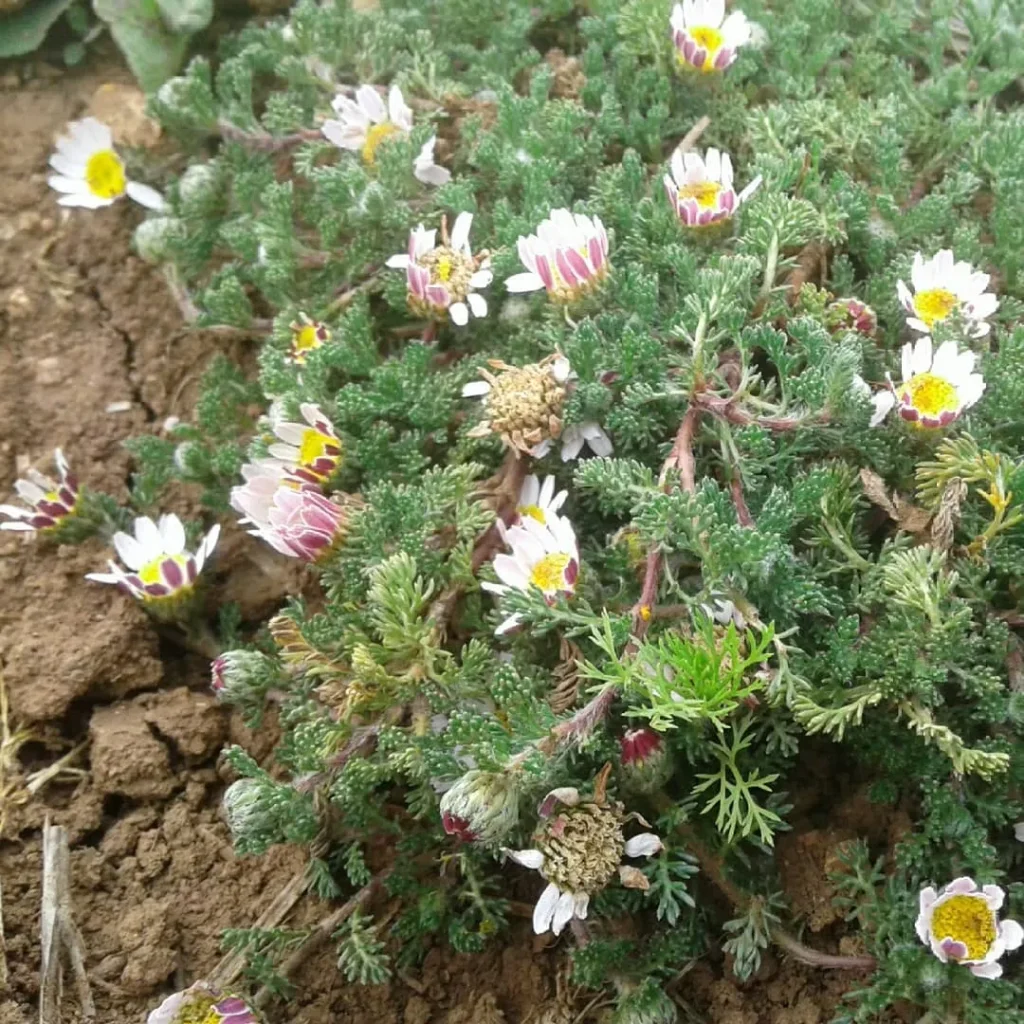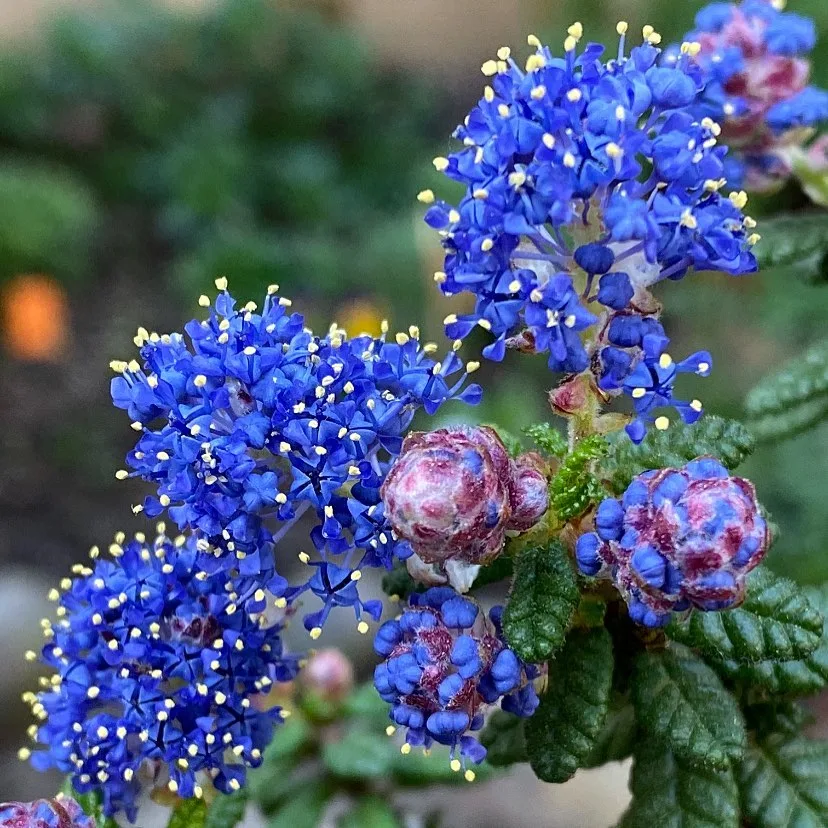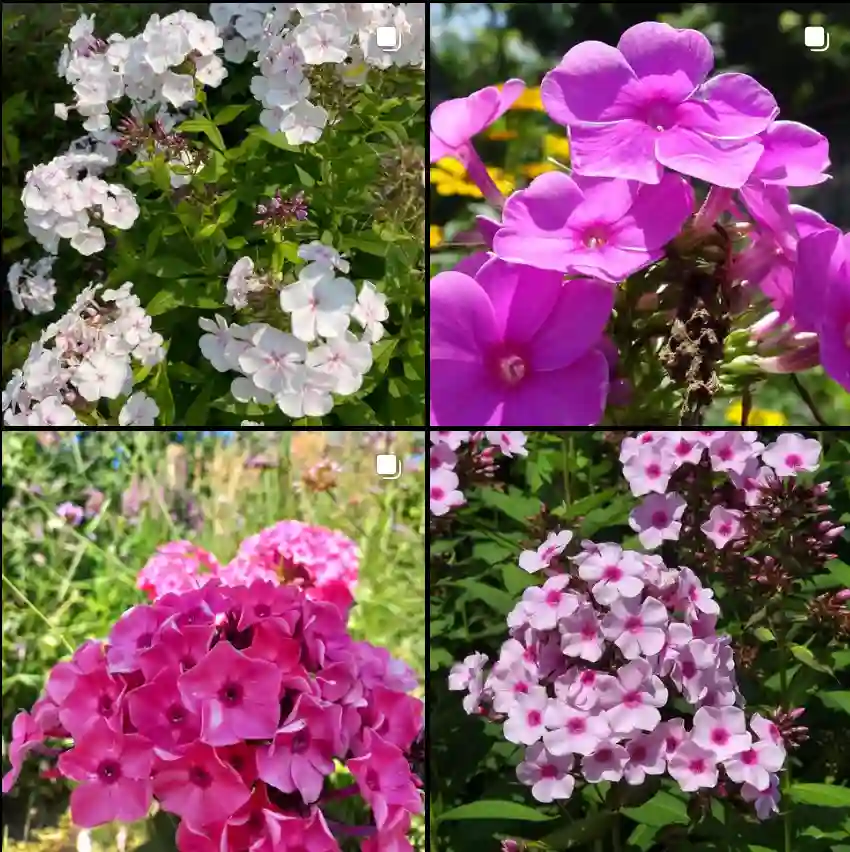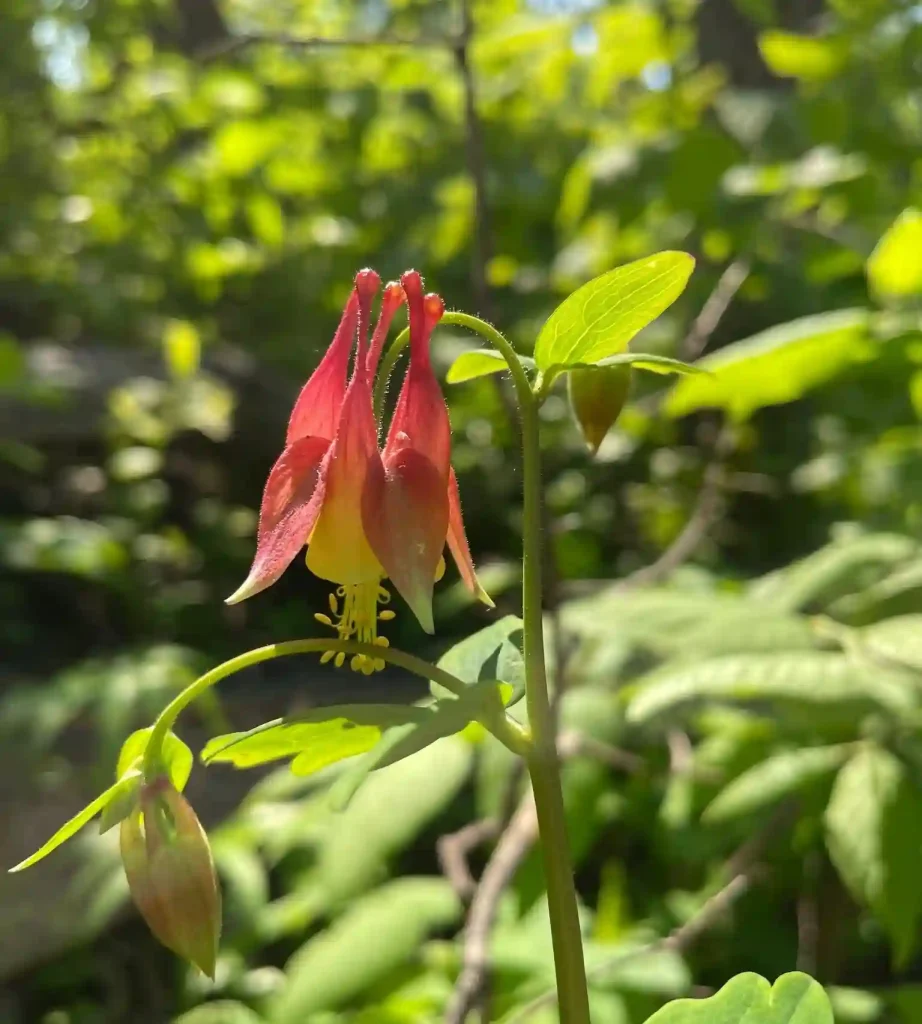October 23 – Aeschynanthus
"Aeschynanthus, the lipstick plant, defines October 23."
Aeschynanthus symbolizes boldness and flair. You stand out with your unique personality. Like its striking flowers, you leave a lasting impression.
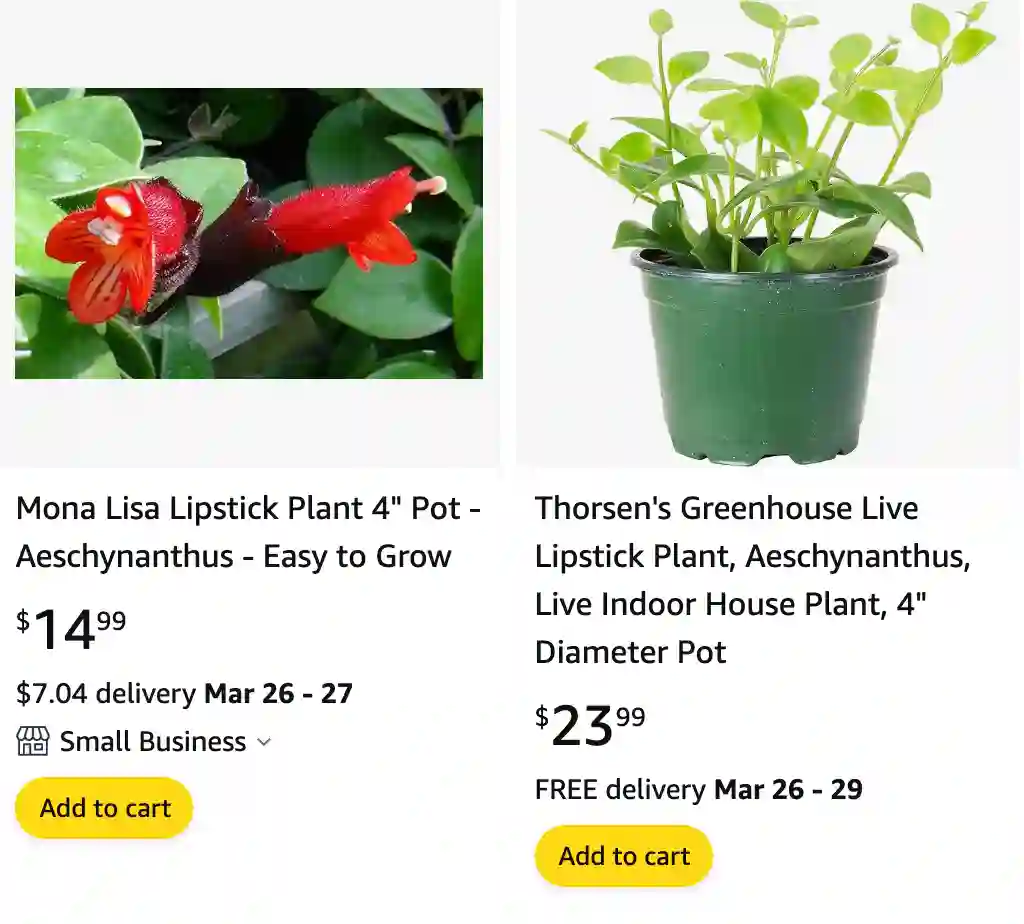
Falling for Lipstick Plants: An Aeschynanthus Love Affair
My name is Ferb Vu, and I have a confession. I’m utterly smitten with Aeschynanthus, the genus of plants belong to the Gesneriaceae family, more commonly known as “lipstick plants”. It started innocently enough. I was at a local nursery, browsing for something to brighten up a shady corner, when a cascade of fiery red blooms caught my eye. Peeking out from dark green foliage, they looked like tiny tubes of lipstick, ready to paint the world with their vibrant color. That was my first Aeschynanthus, and it was the beginning of a beautiful obsession.
What’s not to love? These tropical epiphytes, hailing from the steamy jungles of Southeast Asia, are a testament to nature’s artistry. Their trailing vines, adorned with glossy leaves, bring a touch of the exotic to any space. But it’s the flowers that truly steal the show. Emerging from calyx tubes that resemble lipstick cases, they come in a dazzling array of colors – fiery reds, sunny yellows, soft pinks, and even deep maroons. Each bloom is a miniature masterpiece, a testament to the intricate beauty of the natural world.
A Diverse Family
The genus Aeschynanthus boasts over 180 recognized species, each with its own unique charm. Some of my personal favorites include:
- Aeschynanthus acuminatissimus W.T.Wang
- Aeschynanthus acuminatus Wall. ex A.DC.
- Aeschynanthus albidus (Blume) Steud.
- Aeschynanthus amboinensis (Merr.) Mendum
- Aeschynanthus amoenus C.B.Clarke
- Aeschynanthus andersonii C.B.Clarke
- Aeschynanthus angustifolius (Blume) Steud.
- Aeschynanthus angustioblongus W.T.Wang
- Aeschynanthus angustissimus (W.T.Wang) W.T.Wang
- Aeschynanthus arctocalyx Mendum & Madulid
- Aeschynanthus arfakensis C.B.Clarke
- Aeschynanthus argentii Mendum
- Aeschynanthus asclepioides (Elmer) B.L.Burtt & P.Woods
- Aeschynanthus atrorubens Schltr.
- Aeschynanthus batakiorum Mendum & Madulid
- Aeschynanthus batesii Mendum
- Aeschynanthus brachyphyllus S.Moore
- Aeschynanthus bracteatus Wall. ex A.DC.
- Aeschynanthus breviflorus (S.Moore) K.Schum.
- Aeschynanthus burttii Mendum
- Aeschynanthus buxifolius Hemsl.
- Aeschynanthus calanthus Schltr.
- Aeschynanthus cambodiensis D.J.Middleton
- Aeschynanthus camiguinensis Kraenzl.
- Aeschynanthus cardinalis (H.F.Copel. ex Merr.) Schltr.
- Aeschynanthus caudatus C.B.Clarke
- Aeschynanthus celebicus Koord.
- Aeschynanthus ceylanicus Gardner
- Aeschynanthus chiritoides C.B.Clarke
- Aeschynanthus chrysanthus P.Woods
- Aeschynanthus citrinus Mendum & S.M.Scott
- Aeschynanthus copelandii (Merr.) Schltr.
- Aeschynanthus cordifolius Hook.
- Aeschynanthus crassifolius (Elmer) Schltr.
- Aeschynanthus cryptanthus C.B.Clarke
- Aeschynanthus cuernosensis (Elmer) Schltr.
- Aeschynanthus curtisii C.B.Clarke
- Aeschynanthus curvicalyx Mendum
- Aeschynanthus dasycalyx Hallier f.
- Aeschynanthus dempoensis S.Moore
- Aeschynanthus dischidioides (Ridl.) D.J.Middleton
- Aeschynanthus dischorensis Schltr.
- Aeschynanthus ellipticus K.Schum. & Lauterb.
- Aeschynanthus elmeri Mendum
- Aeschynanthus elongatus C.B.Clarke
- Aeschynanthus everettianus Kraenzl.
- Aeschynanthus fecundus P.Woods
- Aeschynanthus firmus Kraenzl.
- Aeschynanthus flammeus Schltr.
- Aeschynanthus flavidus Mendum & P.Woods
- Aeschynanthus forbesii (S.Moore) K.Schum.
- Aeschynanthus foxworthyi Kraenzl.
- Aeschynanthus fruticosus Ridl.
- Aeschynanthus fulgens Wall. ex R.Br.
- Aeschynanthus garrettii Craib
- Aeschynanthus geminatus Zoll. & Moritzi
- Aeschynanthus gesneriflorus S.Moore
- Aeschynanthus gjellerupii Schltr.
- Aeschynanthus glomeriflorus Kraenzl.
- Aeschynanthus gracilis C.S.P.Parish ex C.B.Clarke
- Aeschynanthus guttatus P.Woods
- Aeschynanthus hartleyi P.Woods
- Aeschynanthus hians C.B.Clarke
- Aeschynanthus hispidus Schltr.
- Aeschynanthus hookeri C.B.Clarke
- Aeschynanthus horsfieldii R.Br.
- Aeschynanthus hosseusii Pellegr.
- Aeschynanthus humilis Hemsl.
- Aeschynanthus impar Schltr.
- Aeschynanthus intraflavus Mendum
- Aeschynanthus irigaensis (Merr.) B.L.Burtt & P.Woods
- Aeschynanthus janowskyi Schltr.
- Aeschynanthus jouyi D.J.Middleton
- Aeschynanthus kermesinus Schltr.
- Aeschynanthus lancilimbus W.T.Wang
- Aeschynanthus lasianthus W.T.Wang
- Aeschynanthus lasiocalyx W.T.Wang
- Aeschynanthus lepidospermus C.B.Clarke
- Aeschynanthus leptocladus C.B.Clarke
- Aeschynanthus leucothamnos Kraenzl.
- Aeschynanthus ligustrinus Schltr.
- Aeschynanthus linearifolius C.E.C.Fisch.
- Aeschynanthus lineatus Craib
- Aeschynanthus littoralis (Merr.) Schltr.
- Aeschynanthus lobaticalyx Mendum
- Aeschynanthus loheri Kraenzl.
- Aeschynanthus longicaulis Wall. ex R.Br.
- Aeschynanthus longiflorus (Blume) A.DC.
- Aeschynanthus macgregorii (Merr.) Mansibang & Pelser
- Aeschynanthus macrocalyx C.B.Clarke
- Aeschynanthus madulidii Mendum
- Aeschynanthus magnificus Stapf
- Aeschynanthus malindangensis (Merr.) Mansibang & Pelser
- Aeschynanthus mannii Kurz ex C.B.Clarke
- Aeschynanthus marginatus Ridl.
- Aeschynanthus masoniae Kurz ex C.B.Clarke
- Aeschynanthus medogensis W.T.Wang
- Aeschynanthus membranifolius (Costantin) D.J.Middleton
- Aeschynanthus mendumiae D.J.Middleton
- Aeschynanthus mengxingensis W.T.Wang
- Aeschynanthus meo K.Schum.
- Aeschynanthus micranthus C.B.Clarke
- Aeschynanthus microcardius B.L.Burtt & R.A.Davidson
- Aeschynanthus microphyllus C.B.Clarke
- Aeschynanthus microtrichus C.B.Clarke
- Aeschynanthus mindanaensis (Merr.) Mansibang & Pelser
- Aeschynanthus miniaceus B.L.Burtt & P.Woods
- Aeschynanthus miniatus Lindl.
- Aeschynanthus minutifolius D.J.Middleton
- Aeschynanthus mollis Schltr.
- Aeschynanthus monetaria Dunn
- Aeschynanthus moningerae (Merr.) Chun
- Aeschynanthus montisucris P.Royen
- Aeschynanthus murthyanus R.Kr.Singh & Arigela
- Aeschynanthus musaensis P.Woods
- Aeschynanthus myrtifolius Schltr.
- Aeschynanthus nabirensis Kaneh. & Hatus.
- Aeschynanthus nervosus (Elmer) Schltr.
- Aeschynanthus nummularius (Burkill & S.Moore) K.Schum.
- Aeschynanthus obconicus C.B.Clarke
- Aeschynanthus ovatus (Merr.) Schltr.
- Aeschynanthus oxychlamys Mendum
- Aeschynanthus pachyanthus Schltr.
- Aeschynanthus panayensis (Merr.) Mansibang & Pelser
- Aeschynanthus papuanus (Schltr.) B.L.Burtt
- Aeschynanthus parasiticus (Roxb.) Wall.
- Aeschynanthus parviflorus (D.Don) Spreng.
- Aeschynanthus pedunculatus D.J.Middleton
- Aeschynanthus pergracilis Kraenzl.
- Aeschynanthus perrottetii A.DC.
- Aeschynanthus persimilis Craib
- Aeschynanthus phaeotrichus Schltr.
- Aeschynanthus philippinensis C.B.Clarke
- Aeschynanthus planipetiolatus H.W.Li
- Aeschynanthus podocarpus C.B.Clarke
- Aeschynanthus poilanei Pellegr.
- Aeschynanthus polillensis Kraenzl.
- Aeschynanthus praelongus Kraenzl.
- Aeschynanthus pseudohybridus Mendum
- Aeschynanthus pulcher (Blume) G.Don
- Aeschynanthus pullei Schltr.
- Aeschynanthus radicans Jack Plant FAQs: Aeschynanthus Radicans
- Aeschynanthus rarus Schltr.
- Aeschynanthus reiekensis Lalhlupuii, S.D.Khomdram & S.D.Yumkham
- Aeschynanthus rejieae Olimpos & Mansibang
- Aeschynanthus rhododendron Ridl.
- Aeschynanthus rhodophyllus Kraenzl.
- Aeschynanthus rizalensis (Merr.) Mansibang & Pelser
- Aeschynanthus roseoflorus Mendum
- Aeschynanthus roseus Schltr.
- Aeschynanthus rubiginosus Teijsm. & Binn.
- Aeschynanthus sanguineus Schltr.
- Aeschynanthus scottii D.J.Middleton & H.J.Atkins
- Aeschynanthus serpens Kraenzl.
- Aeschynanthus setosus Kraenzl.
- Aeschynanthus sinolongicalyx W.T.Wang
- Aeschynanthus siphonanthus C.B.Clarke
- Aeschynanthus smaragdinus F.Wen & J.Q.Qin
- Aeschynanthus sojolianus Mendum & L.E.R.Galloway
- Aeschynanthus solomonensis P.Woods
- Aeschynanthus speciosus Hook.
- Aeschynanthus stenocalyx Kraenzl.
- Aeschynanthus stenosepalus J.Anthony
- Aeschynanthus stenosiphon Schltr.
- Aeschynanthus suborbiculatus S.Moore
- Aeschynanthus superbus C.B.Clarke
- Aeschynanthus tenericaulis Diels
- Aeschynanthus tengchungensis W.T.Wang
- Aeschynanthus teysmannianus Miq.
- Aeschynanthus tirapensis Bhattacharyya
- Aeschynanthus torricellensis Schltr.
- Aeschynanthus trichocalyx Kraenzl.
- Aeschynanthus tricolor Hook.
- Aeschynanthus truncatus (Elmer) Schltr.
- Aeschynanthus tubiflorus C.B.Clarke
- Aeschynanthus tubulosus J.Anthony
- Aeschynanthus urdanetensis (Elmer) Mansibang & Pelser
- Aeschynanthus verticillatus C.B.Clarke
- Aeschynanthus vinaceus P.Woods
- Aeschynanthus viridiflorus Teijsm. & Binn.
- Aeschynanthus volubilis Jack
- Aeschynanthus wallichii R.Br.
- Aeschynanthus wardii Merr.
- Aeschynanthus warianus Schltr.
- Aeschynanthus zamboangensis Kraenzl.
How to care for Aeschynanthus?
Aeschynanthus, commonly known as lipstick plant or basket vine, is a genus of tropical flowering plants prized for their vibrant, tubular flowers and trailing growth habit. Here are some care tips to keep your Aeschynanthus healthy and thriving:
1. Light:
- Bright, Indirect Light: Place your Aeschynanthus in a location with bright, indirect sunlight. Avoid direct sunlight, as it can scorch the leaves.
2. Temperature:
- Warmth: Aeschynanthus prefers temperatures between 60°F to 75°F (15°C to 24°C) year-round. Protect it from drafts and sudden temperature fluctuations.
3. Watering:
- Even Moisture: Keep the soil evenly moist but not waterlogged. Water thoroughly when the top inch of soil feels dry to the touch, and allow excess water to drain away. Avoid letting the soil dry out completely between waterings.
4. Humidity:
- High Humidity: Aeschynanthus thrives in humid conditions. Increase humidity levels by misting the leaves regularly, placing a humidity tray filled with water and pebbles beneath the plant, or using a room humidifier.
5. Soil:
- Well-Draining Potting Mix: Plant your Aeschynanthus in a well-draining potting mix formulated for houseplants or epiphytic plants. A mix containing perlite, peat moss, and orchid bark works well.
6. Fertilizing:
- Regular Feeding: Feed your Aeschynanthus with a balanced, water-soluble fertilizer diluted to half strength every 4-6 weeks during the growing season (spring to early autumn). Reduce or stop fertilizing in late autumn and winter when growth slows.
7. Pruning:
- Regular Pruning: Prune your Aeschynanthus to maintain its shape and promote bushier growth. Pinch back leggy stems and remove any dead or yellowing leaves or flowers.
8. Support:
- Trellis or Support: Provide a trellis or support for your Aeschynanthus to climb or trail. You can train it to grow upwards or allow it to cascade from a hanging basket.
9. Flowering:
- Encouraging Blooms: Aeschynanthus typically blooms in response to shorter daylight hours and cooler temperatures. To encourage blooming, provide a consistent light/dark cycle and maintain temperatures between 60°F to 75°F (15°C to 24°C) during the day and slightly cooler at night.
10. Repotting:
- Repotting: Repot your Aeschynanthus every 1-2 years in spring or early summer, or when it outgrows its current pot. Choose a slightly larger pot with good drainage, and refresh the potting mix.
11. Pest and Disease Control:
- Monitoring: Regularly inspect your Aeschynanthus for signs of pests such as aphids, spider mites, or mealybugs. Treat any infestations promptly with insecticidal soap or neem oil.
- Preventive Measures: Maintain good air circulation around the plant, avoid overcrowding, and keep the foliage clean to prevent pest and disease problems.
How to propagate Aeschynanthus?
Propagation of Aeschynanthus is a fulfilling process that I’ve found quite rewarding. I usually propagate them through stem cuttings, which I take from healthy, mature plants. After ensuring the cuttings have a node or two, I place them in a jar of water, changing it regularly to keep it fresh. It’s fascinating to watch as roots develop over time, signaling that the cutting is ready for planting in soil. Providing warmth and indirect sunlight helps expedite the process, and within a few weeks, I’m delighted to see new growth emerge. It’s a simple yet gratifying way to expand my collection of Aeschynanthus plants.
Is Aeschynanthus radicans a dicot?
Regarding whether Aeschynanthus radicans is a dicot, I’ve learned that it indeed falls into that category. This classification may seem more technical, but it’s fascinating to understand the botanical characteristics that define different plant species. Knowing that Aeschynanthus radicans is a dicot helps me appreciate its place in the broader spectrum of plant life. It’s just one small detail in the intricate tapestry of nature, but it adds to the richness of my understanding and connection with these plants.
Is Aeschynanthus toxic to cats?
As a cat lover and plant enthusiast, one of my concerns was whether Aeschynanthus poses any risk to my feline companions. I’ve researched extensively and found that Aeschynanthus plants, including Aeschynanthus radicans, are indeed toxic to cats if ingested. This discovery prompted me to be extra cautious in placing my plants out of reach of curious paws. While I adore having greenery indoors, my cats’ safety always comes first. It’s a reminder to be mindful of the potential hazards that some plants may pose to our beloved pets, even amidst the joy they bring to our homes.
If i die, water my plants!
